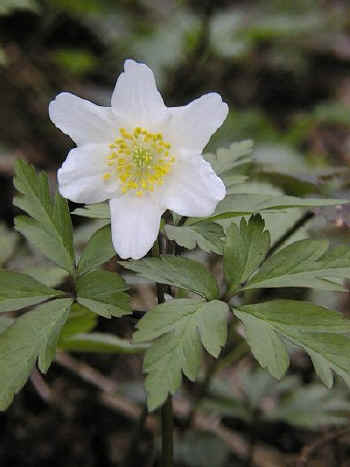The Woodland Education Centre
Heathland Project Report
Report Introduction Contents Summary
Plant Species Diversity on the Project Site
 left:
Wood Anemones, a woodland species, can still be found on the Heathland Restoration site.
left:
Wood Anemones, a woodland species, can still be found on the Heathland Restoration site.
Heathland floras tend to lack diversity, particularly in the drier areas. The relatively large number of species recorded on the project site (species list) is a reflection of the fact that the site is in transition. It is in the pioneer stage of establishment of heathland, when diversity tends to be higher because Heather plants are small and not well-established enough to exclude other vegetation. The site is also still influenced by its original wooded cover, particularly through the seedbank remaining in the soil.
This continuing influence is reflected in the woodland species still occurring commonly on the site. These include Bluebells (Endymion nonscriptus), Wood Anemones (Anemone nemorosa), Wood Sorrel (Oxalis acetosella) and Wood Sedge (Carex sylvatica). The remaining adjacent woodland is also a further source of tree seedlings such as Silver Birch (Betula pendula), Cherry (Prunus sp.), Sycamore (Acer pseudoplanatus), Holly (Ilex aquifolium) and Oak (Quercus sp.).
Continue to species
similarity ![]()
| Heathland Restoration Project Report | ||||

Other Lowland
Heaths in East Devon